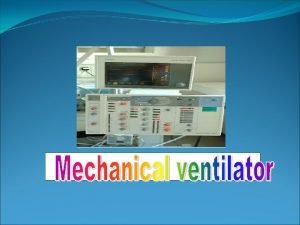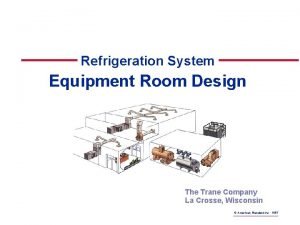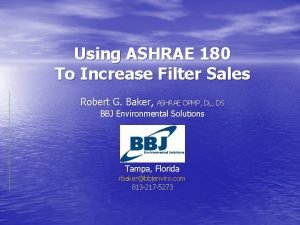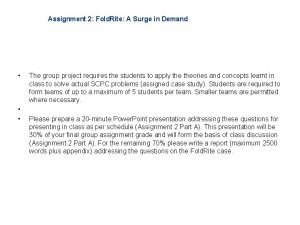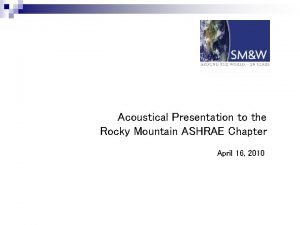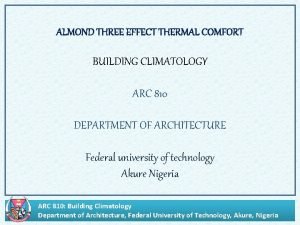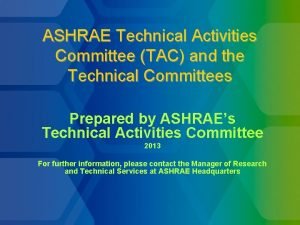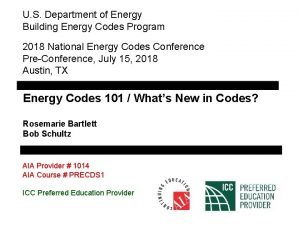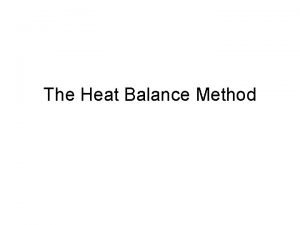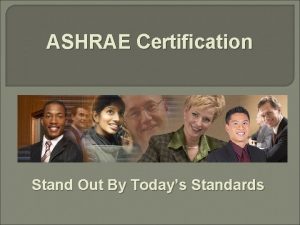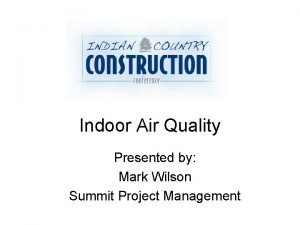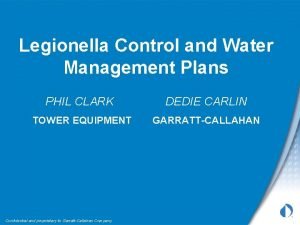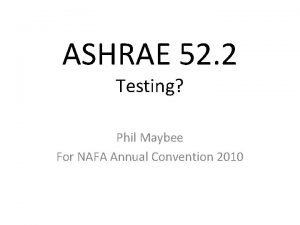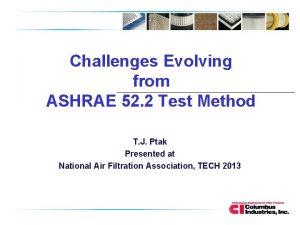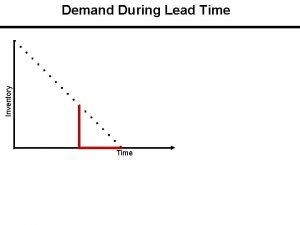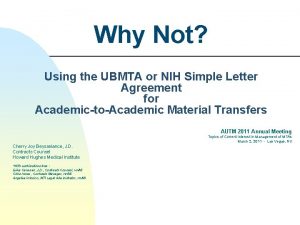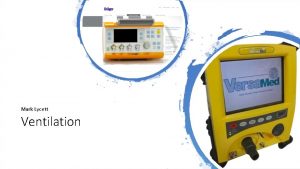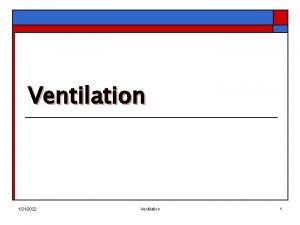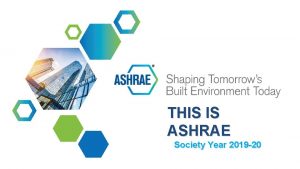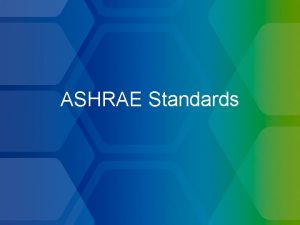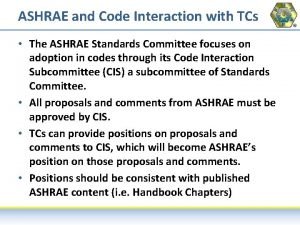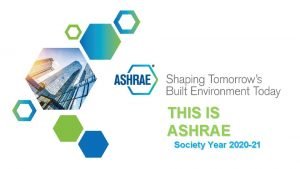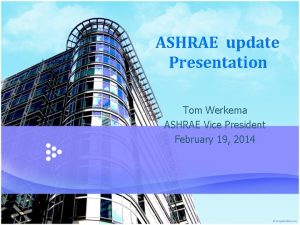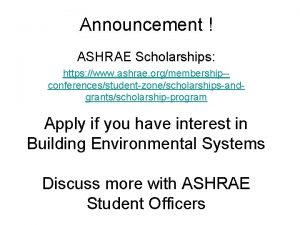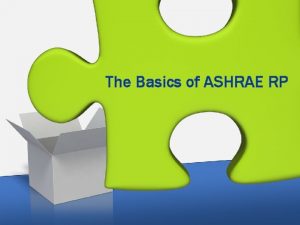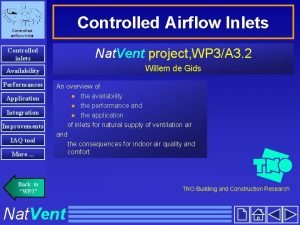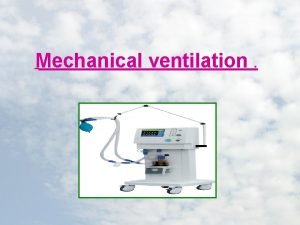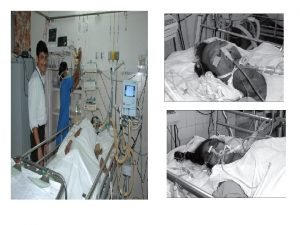Implementing Demand Controlled Ventilation to Meet ASHRAE Standard
















































- Slides: 48

Implementing Demand Controlled Ventilation to Meet ASHRAE Standard 62. 1 - 2010 By Klas C. Haglid, P. E. , R. A. , CEM 1

Klas C. Haglid, P. E. , R. A. , CEM - Bio • • • ASHRAE Distinguished Service Award 2011 ASHRAE Handbook, HVAC Applications and Management, Chapter 37, – Author, Klas C. Haglid P. E. R. A. ASHRAE Standard 189. 1, Corresponding Member GPC 32 P - Sustainable, High Performance Operations & Maintenance, Voting Member, Contributing, Co-Author Technical Committee 5. 5 - Air-To-Air Energy Recovery, Handbook Subcommittee Chairman, Past Chairman Technical Committee 7. 6 - System Energy Utilization, Voting Member Technical Committee 7. 8 - Owning and Operating Costs of Commercial Buildings, Past Chairman ASHRAE Standard 84 -1991 R, Voting Member Reviewed draft of ASHRAE Standard 84 -1991 R and provided engineering details for efficiency calculations. 2

Objectives • Complying with ASHRAE Std. 62. 1 -2010 to improve IAQ while increasing energy efficiency ASHRAE Std. 90. 1 can be accomplished with: – Displacement Ventilation – Demand Controlled Ventilation – Energy Recovery Ventilators – Variable Speed Drives 3

ASHRAE Std. 62. 1 -2010 • Ventilation for Acceptable Indoor Air Quality – How to determine minimum prescriptive ventilation rates – How to use Demand Side Ventilation to meet ASHRAE Standard 62. 1 -2010 4

Definitions • “acceptable indoor air quality: air in which there are no known contaminants at harmful concentrations as determined by cognizant authorities and with which a substantial majority (80% or more) of the people exposed do not express dissatisfaction. ” –ASHRAE Standard 62. 1 -2010 pg. 3 5

Definitions • Demand Control Ventilation (DCV): any means by which the breathing zone (Vbz) can be varied to the occupied space or spaces based on the actual or estimated number of occupants and/or ventilation requirements of the occupied zone –ASHRAE Standard 62. 1 -2010 pg. 4 6

6. 1. 1 Ventilation Rate Procedure • The following procedure for determining the minimum prescriptive ventilation rates can be used on any zone type. • 6. 1. 1 Takes into consideration: – Space type – Number of Occupants – Floor Area – Typical contaminant sources and source strength 7

Ventilation Rate Procedure Breathing Zone (bz) Outdoor Airflow (OA) • Vbz = Rp. Pz + Ra. Az where: • Rp = outdoor airflow rate required person as determined from Table 6 -1*. • Pz = zone population • Ra = outdoor airflow rate required per unit area as determined from Table 6 -1*. • Az = zone floor area *Table 6 -1 from ASHRAE Standard 62. 1 -2010 8

Two Parts to the Formula Type and size of space? How many people?

First Part of the Equation Rate Person Rp Zone Pop Pz cfm for people ASHRAE Std. 62. 1 2010 10

Second Part Rate Person Rp Zone Rate Per Area Ra Zone Pop Pz Area Az cfm for People cfm for Area 11

Combined cfm for People Vbz Area Breathing Zone Outdoor Airflow 12

Office Example What is the prescriptive design for outdoor air (cfm) of a 1500 square foot office with 12 occupants? Eq 6 -1 : Vbz = Rp. Pz + Ra. Az Design inputs for office space: Pz = 12 people Az = 1, 500 square feet of floor area Vbz = (5 x 12) + (. 06 x 1500) = 60 + 90 = 150 cfm 13

School Example What is the prescriptive design for outdoor air (cfm) of a 1100 square foot classroom with 30 students? Eq 6 -1 : Vbz = Rp. Pz + Ra. Az From Table 6 -1: Rp = 10 cfm/person Ra = 0. 12 cfm/ft 2 Design inputs from school classroom project for ventilation: Pz = 30 people Az = 1100 square feet Vbz = (10 x 30) + (. 12 x 1100) = 300 + 132 = 432 cfm 14

General Manufacturing Example (Excludes Heavy Industrial and processes using chemicals) What is the prescriptive design for outdoor air (cfm) of a 50, 000 square foot coat hanger production facility with 20 machinists? Eq 6 -1 : Vbz = Rp. Pz + Ra. Az From Table 6 -1: Rp = 10 cfm/person Ra = 0. 18 cfm/ft 2 Increase Production facility input data: Pz = 20 people Az = 50, 000 square feet of floor area Vbz = (10 x 20) + (. 18 x 50000) = 200 + 9, 000= 9, 200 cfm Notice the Area outdoor air rate (Ra) increased for a manufacturing facility. 15

Ventilation Rate Procedure – Zone Outdoor Airflow • Voz = Vbz/Ez • (Ez) The zone air distribution effectiveness shall be determined using ASHRAE Std. 62. 1 -2010, Table 6 -2. (Partial Table) 16

Methods of Providing Outdoor Air to Zone • Dilution Ventilation • Displacement Ventilation 17

Dilution Ventilation It’s important to design ventilation system to have maximum air distribution. This will help eliminate dead space and short circuiting of air flow Poor distribution of air across classroom breathing zone 18

Dilution Ventilation • Typical in U. S. construction • Outdoor air is brought into space and dilutes contaminant concentrations in the space. • Adequate air mixing 19

Air Mass Exchange Diagram shows good air circulation providing fresh air on one end of room and exhaust pulling air out on the other end to maximize removing contaminant concentrations by displacing room temperature air across a Breathing Zone 20

Displacement Ventilation (DV) • Uses natural convection to provide “Buoyancyassisted forced ventilation” • Effectively removes contaminants from people and objects locally • ASHRAE Std. 62. 1 -2010 Table 6 -2 recognizes DV to be 1. 2 times more effective than traditional dilution ventilation • Some applications measured DV to be 2 to 2. 5 more effective than traditional dilution ventilation 21

Displacement Ventilation • Using displacement ventilation and then measuring air quality of the space is an effective way to improve IAQ • Often times, balancing airflow according to how effective the displacement ventilation system is can reduce required airflow by 50% – This saves energy and reduces latent loads – Can be achieved with Variable Speed Drives (VSD) 22

Demand Controlled Ventilation (DCV) • “any means by which the breathing zone outdoor airflow (Vbz) can be varied to the occupied space or spaces based on the actual or estimated number of occupants and/or ventilation requirements of the occupied zone. ” – ASHRAE Std. 62. 1 -2010 pg. 4 23

Example of DCV Methods Fan Relays EA ERV SOA CO 2 Sensor comes on over 700 ppm and turns off under 600 ppm ERV- Energy Recovery Ventilator People EA- Exhaust Air SOA- Supply Outside Air 24

DCV • CO 2 concentrations in outdoor air generally range from 300 to 500 ppm • ASHRAE std. 62. 1 2007 and 2010 recognize 700 ppm of CO 2 above outdoor ambient levels or 1000 to 1200 ppm to be acceptable air quality for an indoor space. Reference page 37 of Appendix C • Displacement Ventilation with CO 2 Demand Controlled Ventilation properly engineered and installed will keep CO 2 levels well below 1000 ppm • DCV can reduce runtime from 168 hours per week to 30 hours per week for a classroom. That is an 82% reduction in runtime. 25

Summary of Ventilation Rates • Determine prescriptive design ventilation rate for zone by using Ventilation Rate Procedure • Determine Method of Ventilation – Dilution – Displacement – up to 2. 5 times more effective • Choose appropriate method to control the ventilation system and monitor the contaminants of concern – CO 2 sensor – VSD – Variable Speed Drive to reduce fan speed to balance and optimize ERV efficiency 26

Fan Affinity Laws • 27

Fan Affinity Laws • 100 cfm @ 100 rpm 200 cfm @ 200 rpm 28

Fan Affinity Laws • 100 cfm @ 100 rpm 200 cfm @ 200 rpm Pressure is squared 0. 3 WC @ 100 rpm 0. 9 WC @ 200 rpm 29

Fan Affinity Laws • 0. 3” WC @ 100 rpm 0. 9” WC @ 200 rpm Energy Expended is Cubed 0. 3” WC @ 1 BHP 0. 9” WC @ 8 BHP 30

Example • What is the percent difference in BHP required to run a ventilation system if alternative 2 has a 50% increase in static pressure from alternative 1? • Alternative 1 Conditions: – CFM = 8, 000 – SP = 1” in wg – BHP = 5 – RPM = 1000 31

Example Continued • 32

Not All ERVs Are the Same • ERV Features to Compare: – Airflow Arrangement • Thermal Effectiveness – Pressure Drop – Fan Efficiency – Maintenance – Sound Levels – Cross Contamination 33

Heat Exchanger Airflow Arrangement ASHRAE states: • Counter-flow heat exchangers are theoretically capable of achieving 100% Sensible Effectiveness* • Parallel Flow heat exchangers: 50% (Max) • Cross-flow heat exchangers and Enthalpy Wheels: 50 -75% (Max) *Note: Source: 2012 ASHRAE Handbook – HVAC Systems and Equipment, Chapter 26: Air-to-Air Energy Recovery Equipment. 34

High Efficiency Fans • Typical fan efficiency can range from 5 to 10 W/cfm • A high efficiency fan can be expected to be approximately 0. 2 W/cfm • The EER of an ERV’s performance is formulated by the BTUs recovered divided by the watts of power consumed from the fan energy. EER = BTUs Recovered Watts of Fan Power 35

Thermal Efficiency vs. Overall Efficiency 160 140 120 100 80 60 40 20 0 High Eff. ERV Typical ERV Effectiveness (%) Fan Power (W) EER (BTU/W) Typical ERV has an EER of around 11. High efficiency ERV can be well above 120. Combining premium Efficiency fans with High efficiency ERVs and a low static pressure system can yield great energy savings 36

Efficiency = Payback A short term savings in build cost is outweighed by sustainable gains over present consumption. 37

Maintenance Costs are Essential • There’s more to a product than its initial costs and efficiency – Maintenance and efficiency equal long term and continuous ROI • • • Corrosion resistant equipment Minimal moving parts Low static pressure Appropriate filters and size Efficient fans Location/Operation 38

Tools to Meet ASHRAE Std. 62. 1 and Improve IAQ While Increasing Energy Efficiency, ASHRAE Std. 90. 1 • Displacement Ventilation • Demand Controlled Ventilation – CO 2 controls or other contaminant monitoring sensors • ERV – Counter flow heat exchanger – Low Pressure Drops – High efficiency fans • Variable Speed Drives – Air balancing – Better control 39

40

41

42

43

Questions Acceptable IAQ indoor air quality is defined as: A. Air in which there are no known contaminants at harmful concentrations. B. Conditions determined ASHRAE 62. 1 C. Air with which a substantial majority (80% or more) of the people exposed do not express dissatisfaction. ” D. All of the Above. 44

Questions Compliance with ASHRAE Standard 62. 1 and an Increase in energy efficiency ASHRAE Std. 90. 1 can be obtained with: A. Displacement Ventilation B. Variable Speed Drives C. Demand Control Ventilation D. All of the Above. 45

Questions The procedure for determining the minimum prescriptive ventilation rates that can be used in any zone type takes into consideration which of the following? A. The number of Occupants in the space B. Air Class defined by ASHRAE C. Linear Feet of Wall space D. Both A and B 46

Questions Displacement Ventilation can best be described as: A. Outdoor air that is brought into a space in lieu of contaminants B. An Improvement of Air Classification C. The removal of contaminants with limited air mixing D. None of the Above 47

Questions Which calculation best represents the efficiency of an ERV? A. Cfm exhaust versus cfm Intake B. Apparent Thermal Efficiency C. Fan Curve and Efficiency D. None of the Above 48
 Ventilation modes
Ventilation modes Ashrae standard 15 refrigerant monitor
Ashrae standard 15 refrigerant monitor Ashrae standard 202
Ashrae standard 202 Ashrae standard 180
Ashrae standard 180 Peace be with you till we meet again
Peace be with you till we meet again Nfpa 1600
Nfpa 1600 Nfpa 1600
Nfpa 1600 Foldrite furniture case study
Foldrite furniture case study Rocky mountain ashrae
Rocky mountain ashrae Equatorial comfort index
Equatorial comfort index Www.ashrae.org membership
Www.ashrae.org membership Ashrae tac
Ashrae tac Ashrae
Ashrae Ashrae heat load table
Ashrae heat load table Ashrae membership renewal
Ashrae membership renewal Ashrae
Ashrae Ashrae 188 water management plan
Ashrae 188 water management plan Ashrae 52
Ashrae 52 Rocky mountain ashrae
Rocky mountain ashrae Ashrae 52
Ashrae 52 Module 5 supply and demand introduction and demand
Module 5 supply and demand introduction and demand Independent demand inventory system
Independent demand inventory system What is demand estimation
What is demand estimation Stochastic inventory model example
Stochastic inventory model example Halimbawa ng iskedyul ng demand
Halimbawa ng iskedyul ng demand Paradox of value
Paradox of value Measures to correct excess and deficient demand
Measures to correct excess and deficient demand Dependent demand meaning
Dependent demand meaning Independent demand inventory management
Independent demand inventory management Market demand curve
Market demand curve Rop inventory
Rop inventory Bert spector
Bert spector Checklist model for project selection
Checklist model for project selection Retail management notes doc
Retail management notes doc Ubmta implementing letter
Ubmta implementing letter Planning and implementing crm projects
Planning and implementing crm projects Implementing strategies management and operations issues
Implementing strategies management and operations issues Implementing strategies marketing finance/accounting
Implementing strategies marketing finance/accounting Matching structure with strategy
Matching structure with strategy Designing and implementing brand architecture strategies
Designing and implementing brand architecture strategies Implementing firewall technologies
Implementing firewall technologies Qsen teamwork and collaboration definition
Qsen teamwork and collaboration definition Implementing strategies: management and operations issues
Implementing strategies: management and operations issues Flanker brand strategy
Flanker brand strategy Designing and implementing brand architecture
Designing and implementing brand architecture Hrd program implementation and evaluation
Hrd program implementation and evaluation Ch 7
Ch 7 Challenges of implementing predictive analytics
Challenges of implementing predictive analytics Access rights definition
Access rights definition
